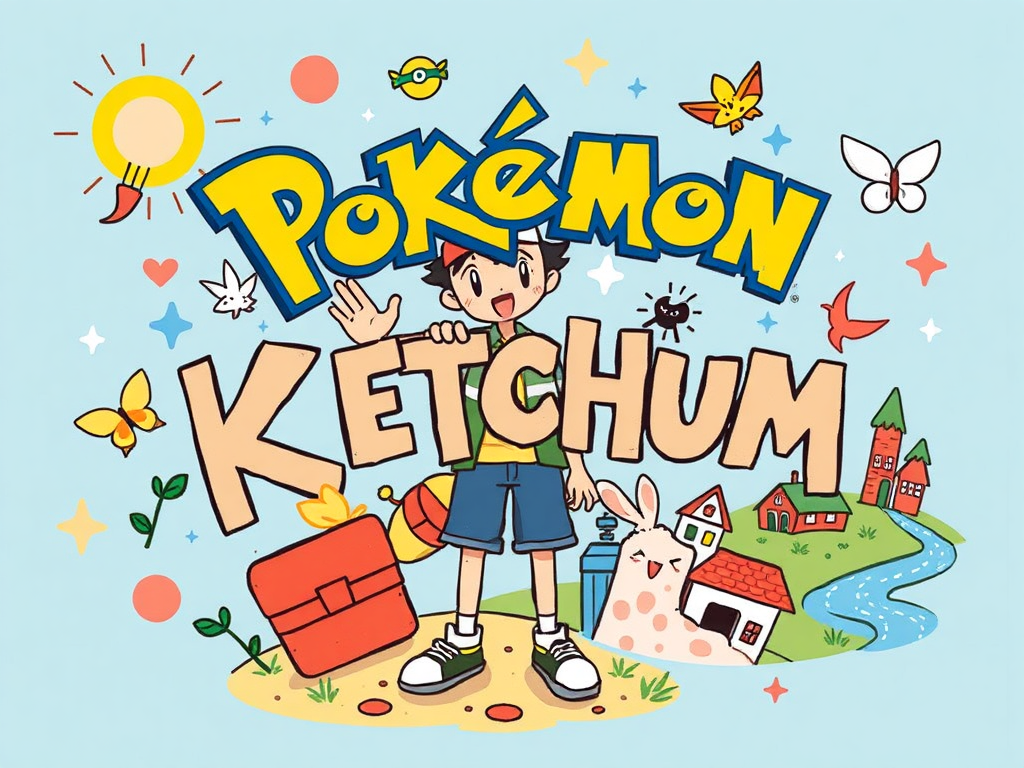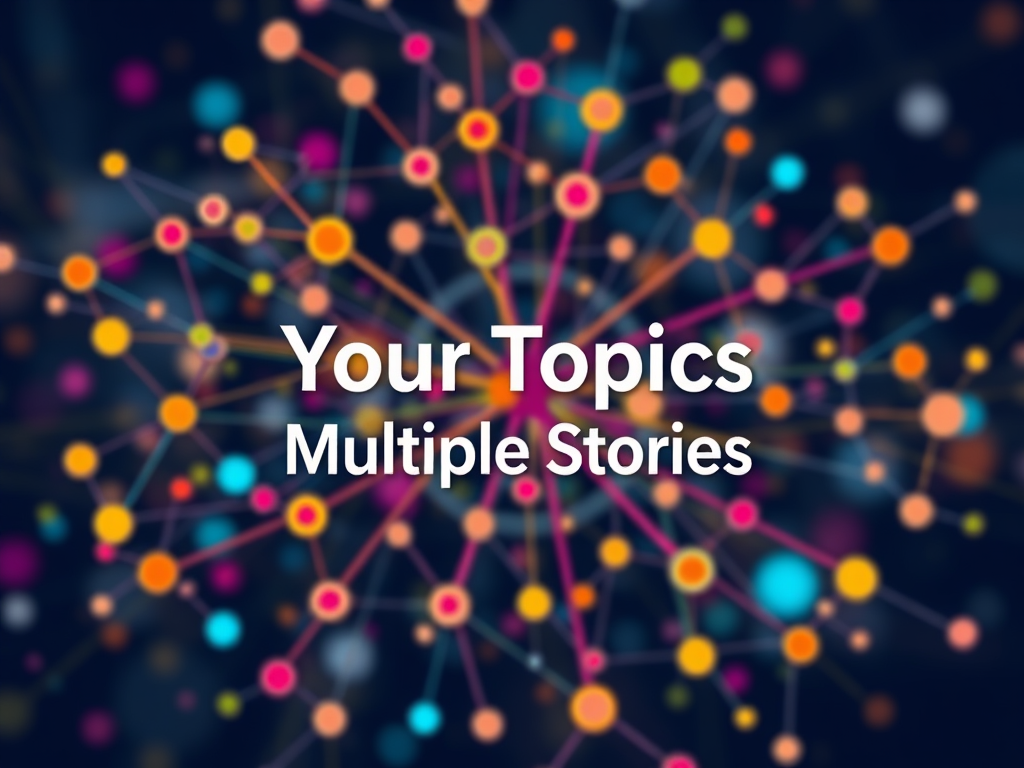Pansexuality is one of the most misunderstood yet important concepts in modern discussions about sexual orientation and gender identity. As society becomes more inclusive and aware of diverse identities, understanding what pansexual means has become crucial for creating supportive environments for LGBTQ+ individuals.
This comprehensive guide explores everything you need to know about pansexuality, from its definition and history to common misconceptions and how it differs from other sexual orientations. Whether you’re exploring your own identity or supporting someone in your life, this article provides the knowledge and understanding you need.
What is Pansexuality? Understanding the Core Definition
Pansexuality refers to the romantic, emotional, and/or sexual attraction to people regardless of gender. The term comes from the Greek prefix “pan-” meaning “all” or “every,” indicating that pansexual individuals have the potential to be attracted to people of all genders.
This sexual orientation is fundamentally different from others because gender is not important in determining attraction. Unlike other orientations that may focus on specific genders, pansexuality encompasses attraction that transcends traditional gender boundaries.
Key Characteristics of Pansexual Attraction
Pansexual individuals experience:
- Romantic attraction to people of any gender
- Emotional attraction that isn’t limited by gender identity
- Sexual attraction that focuses on the person rather than their gender
- The ability to form meaningful connections with male, female, nonbinary, transgender, and gender-fluid individuals
The popular phrase “hearts, not parts” effectively captures the essence of pansexual attraction – it’s about connecting with a person’s character, personality, and individual qualities rather than their gender presentation.
Historical Context and Evolution of Pansexuality
Early Origins and Development
The concept of pansexuality has existed since the early 1900s, though its current meaning emerged in the 1960s. This timeline shows that pansexuality is not a recent trend or “passing fad” as some critics claim, but rather a well-established aspect of human sexual diversity.
| Time Period | Development |
|---|---|
| Early 1900s | Term first appears in psychological literature |
| 1960s | Current meaning of pansexuality established |
| 1990s-2000s | Increased visibility in LGBTQ+ communities |
| 2010s-Present | Mainstream recognition and celebrity representation |
The Modern Pansexual Movement
Today’s pansexual movement has gained significant momentum through:
- Social media awareness campaigns
- Celebrity representation from figures like Miley Cyrus, Janelle Monae, and JoJo Siwa
- Increased media portrayal in television and film
- Growing academic research on sexual fluidity
- Pride movement inclusion and visibility
Pansexual vs Bisexual: Understanding the Key Differences
One of the most common questions about pansexuality is how it differs from bisexuality. While these orientations share similarities, they have distinct characteristics that are important to understand.
Pansexuality vs Bisexuality Comparison
| Aspect | Pansexuality | Bisexuality |
|---|---|---|
| Definition | Attraction regardless of gender | Attraction to two or more genders |
| Scope | All genders included | Two or more genders, but not necessarily all |
| Gender Role | Gender doesn’t matter | Gender may influence attraction |
| Inclusivity | Broader than bisexuality | More specific gender preferences |
Why the Distinction Matters
Understanding that pansexuality is broader than bisexuality helps clarify why some people prefer one label over another. Bisexual individuals may be attracted to multiple genders while still having gender preferences, whereas pansexual people experience attraction where gender simply isn’t a factor.
Both orientations are valid, and some people use the terms interchangeably based on personal preference and what feels most authentic to their experience.
Pansexual vs Omnisexual vs Polysexual: Navigating Similar Orientations
The landscape of sexual orientation includes several terms that might seem similar to pansexuality. Understanding these distinctions helps clarify the nuances of sexual identity.
Omnisexuality: The Subtle Difference
Omnisexuality is often used interchangeably with pansexuality, but there’s a subtle distinction:
- Omnisexual individuals are attracted to all genders but may still notice or consider gender
- Pansexual individuals experience attraction regardless of gender – gender truly doesn’t factor into their attraction
Both “pan” and “omni” mean “all,” but the difference lies in whether gender plays any role in attraction.
Polysexuality: Many, But Not All
Polysexuality refers to attraction to many, but not all genders. The prefix “poly-” means “many,” indicating that polysexual individuals:
- Are attracted to multiple genders
- May have specific gender preferences
- Don’t necessarily include all gender identities in their attraction
Comparison Table
| Orientation | Prefix Meaning | Gender Scope | Gender Consideration |
|---|---|---|---|
| Pansexual | Pan = All | All genders | Gender irrelevant |
| Omnisexual | Omni = All | All genders | Gender acknowledged |
| Polysexual | Poly = Many | Many genders | Gender selective |
| Bisexual | Bi = Two | Two or more | Gender relevant |
Pansexual Celebrities and Public Figures
Celebrity representation has played a crucial role in increasing pansexual visibility and acceptance. Many well-known figures have openly discussed their pansexuality, helping to normalize and educate about this sexual orientation.
Notable Pansexual Celebrities
Miley Cyrus was one of the first major celebrities to publicly identify as pansexual, stating that she’s attracted to people regardless of gender. Her openness helped bring pansexuality into mainstream conversations.
Janelle Monae has been a powerful advocate for LGBTQ+ rights and pansexual visibility, using her platform to educate fans about sexual fluidity and gender diversity.
JoJo Siwa came out as pansexual in 2021, becoming an important role model for younger LGBTQ+ individuals and showing that pansexuality exists across all age groups.
Other notable pansexual celebrities include:
- Bella Thorne – Actress and singer
- Cara Delevingne – Model and actress
- Brandon Urie – Panic! At The Disco frontman
- Demi Lovato – Singer and mental health advocate
- Angel Haze – Rapper and musician
- Jazz Jennings – Transgender activist and TV personality
- Caldwell Tidicue (Bob the Drag Queen) – Drag performer and TV host
Impact of Celebrity Representation
Celebrity representation has resulted in:
- Increased social awareness about pansexuality
- Reduced stigma and misconceptions
- More educational resources and discussions
- Greater acceptance in mainstream media
- Inspiration for individuals exploring their own sexual identity
Pansexual Characters in Media and Entertainment
Media representation has significantly improved for pansexual characters, though there’s still room for growth. These characters help normalize pansexuality and provide representation for pansexual viewers.
Television and Film
David Rose from Schitt’s Creek, played by Dan Levy, is one of the most celebrated pansexual characters. His famous wine analogy – “I like wine, not the label” – perfectly captures the essence of pansexual attraction.
Ola from Sex Education provides another excellent example of pansexual representation, showing how pansexual individuals navigate relationships and identity exploration.
Animated and Comic Characters
Rick Sanchez from Rick and Morty represents pansexual attraction in animation, while Deadpool has been confirmed as pansexual in the comics, bringing this orientation to superhero media.
Klaus Hargreeves from The Umbrella Academy and Sadie Miller from Steven Universe demonstrate how pansexual characters can exist across different genres and age groups.
Impact on Representation
| Medium | Character Examples | Impact |
|---|---|---|
| TV Drama | David Rose, Ola | Mainstream acceptance |
| Animation | Rick Sanchez, Sadie Miller | Youth education |
| Comics | Deadpool | Superhero representation |
| Sci-Fi | Jadzia Dax | Future inclusivity |
The Pansexual Flag and Symbol Meanings
Visual representation plays an important role in LGBTQ+ identity and community building. The pansexual flag and symbols provide a way for pansexual individuals to express their identity and find community.
Pansexual Flag Design and Meaning
The pansexual flag features three horizontal stripes of equal size:
- Pink stripe – Represents attraction to women and femininity
- Blue stripe – Represents attraction to men and masculinity
- Yellow stripe – Represents attraction to nonbinary and gender-fluid people
This color symbolism effectively communicates the core principle of pansexuality: attraction to people across the entire gender spectrum.
Pansexual Symbol
The pansexual symbol combines the male symbol, female symbol, and transgender symbol into a P-shape, representing the inclusive nature of pansexual attraction. This symbol design visually communicates that pansexuality encompasses attraction to all gender identities.
Importance of Visual Identity
Pride flags and symbols serve several important functions:
- Create visual representation for the community
- Provide identity symbols for individuals
- Facilitate community recognition and connection
- Demonstrate inclusivity and acceptance
- Educate others about sexual diversity
Common Myths and Misconceptions About Pansexuality
Despite increased visibility, pansexuality still faces numerous misconceptions and stereotypes. Addressing these myths is crucial for creating better understanding and acceptance.
Debunking Major Misconceptions
Myth: Pansexual people are “sexually forward” or promiscuous.
Reality: Pansexual individuals have the same range of sexual activity preferences as anyone else. Some may be highly active, while others prefer monogamous relationships or may be asexual. Sexual orientation doesn’t determine behavior.
Myth: Pansexual people are “attracted to everyone” they meet.
Reality: Pansexuality means having the potential to be attracted to people of any gender, not being automatically attracted to every person. Just as heterosexual individuals aren’t attracted to every person of the opposite gender, pansexual people have specific preferences and standards.
Myth: Pansexual people are “less likely to commit” to monogamous relationships.
Reality: Pansexuality has no connection to polyamory or relationship dynamics. Many pansexual individuals prefer monogamous relationships and are just as capable of commitment as anyone else.
Addressing Harmful Stereotypes
Common stereotypes that harm the pansexual community include:
- Confusion about their identity
- Being “unable to make up their minds“
- Pansexuality being a “passing fad“
- Promiscuity myths and assumptions
- Commitment issues and relationship instability
The Reality of Pansexual Identity
Pansexuality represents a valid and well-established sexual orientation that:
- Has existed for over a century
- Is supported by research findings and medical review
- Provides authentic identity validation for many individuals
- Contributes to sexual diversity and human understanding
- Deserves respect and acceptance like any other orientation
Pansexual Relationships and Dating
Pansexual relationships can take many forms, and understanding the dynamics involved helps create more inclusive and supportive environments for pansexual individuals.
Types of Pansexual Relationships
Pansexual individuals may find themselves in various relationship types:
- Straight-passing relationships with different-gender partners
- Nonheterosexual relationships that are clearly LGBTQ+
- Monogamous relationships with one partner
- Polyamorous arrangements (though this is separate from pansexuality)
Challenges in Pansexual Relationships
Pansexual individuals often face unique challenges in dating and relationships:
Straight-Passing Privilege Issues
When pansexual individuals are in straight-passing relationships, they may:
- Experience microaggressions about their “real” orientation
- Have their sexual identity dismissed or invalidated
- Face pressure to “choose a side”
- Deal with assumptions about their relationship dynamics
Communication and Boundaries
Successful pansexual relationships require:
- Open partner communication about identity and needs
- Clear boundary setting regarding monogamy and expectations
- Respect for each other’s identity and orientation
- Understanding of pansexual experiences and challenges
Dating Preferences and Compatibility
Pansexual dating involves:
- Focus on individual attraction rather than gender
- Personal preferences that vary by individual
- Compatibility based on personality, values, and connection
- Dating preferences that prioritize emotional and intellectual connection
Self-Discovery: Am I Pansexual?
Identity exploration is a personal journey that takes time and self-reflection. Many people wonder if they might be pansexual, and there are several indicators that can help with self-discovery.
Signs You Might Be Pansexual
Consider these questions for self-identification:
- Do you find yourself attracted to people regardless of gender?
- Is someone’s gender identity irrelevant to your attraction?
- Are you drawn to people across the gender spectrum?
- Do you focus more on personality and individual qualities than gender?
- Have you experienced attraction to male, female, nonbinary, or transgender individuals?
The Self-Discovery Process
Identity development often involves:
- Sexual spectrum exploration and questioning
- Labels and terminology research and consideration
- Community resources and support seeking
- Self-acceptance and identity validation
- Coming out process when ready
Important Considerations
Remember that sexual identity can be fluid and evolving. You don’t need to:
- Rush to label yourself
- Fit perfectly into any category
- Have all the answers immediately
- Justify your identity to others
Identity evolution is normal, and self-acceptance should be prioritized over external validation.
Coming Out as Pansexual
The coming out process is deeply personal and varies greatly between individuals. For pansexual people, coming out can involve unique challenges due to lesser public understanding of pansexuality.
Preparing for Coming Out
Before coming out, consider:
- Your personal safety and support systems
- The level of understanding in your environment
- Educational resources to share with others
- Your emotional readiness for various reactions
- Professional support if needed
Explaining Pansexuality to Others
When coming out, you might explain pansexuality as:
- Attraction to people regardless of gender
- Being drawn to hearts, not parts
- Having the capacity for all-gender attraction
- Focusing on the person rather than their gender
- Being part of the LGBTQ+ community and sexual diversity
Challenges and Considerations
Coming out as pansexual may involve:
- Myth-busting and education about pansexuality
- Dealing with misconceptions and stereotypes
- Addressing confusion about the difference from bisexuality
- Handling questions about relationship dynamics
- Managing family acceptance and friend support
Support Resources
Seek support through:
- LGBTQ+ community organizations
- Support groups for pansexual individuals
- Online communities and educational resources
- Professional counseling if needed
- Mental health services specializing in LGBTQ+ issues
Mental Health and Pansexual Identity
Mental health considerations are important for pansexual individuals, who may face unique challenges related to identity development, social acceptance, and representation.
Common Mental Health Challenges
Pansexual individuals may experience:
- Identity confusion and questioning
- Minority stress from discrimination
- Anxiety about coming out and acceptance
- Depression related to social isolation
- Relationship anxiety and dating challenges
Protective Factors
Psychological well-being can be supported through:
- Community connections and belonging
- Positive representation in media and culture
- Family acceptance and friend support
- Professional support from LGBTQ+-affirming therapists
- Self-acceptance and identity validation
Healthcare Access
Healthcare access considerations include:
- Finding LGBTQ+-affirming healthcare providers
- Sexual health services that understand pansexuality
- Mental health support specialized in sexual identity
- Inclusive medical environments and terminology
- Respectful treatment of pansexual identity
The Future of Pansexual Visibility and Acceptance
Pansexual visibility and acceptance continue to grow, with positive trends emerging across multiple areas of society.
Current Progress
Recent developments include:
- Increased media representation and positive portrayals
- Growing celebrity representation and role models
- Better educational resources and awareness campaigns
- More inclusive language in institutions and organizations
- Expanded research on sexual fluidity and identity
Ongoing Challenges
Areas needing continued attention:
- Misconceptions and stereotypes in mainstream media
- Limited representation in certain demographics
- Healthcare and professional training gaps
- Educational curriculum inclusivity
- Legal protections and rights
Future Outlook
The future of pansexual acceptance looks promising with:
- Younger generations showing greater LGBTQ+ acceptance
- Continued social progress and cultural shifts
- Expanding legal protections for LGBTQ+ individuals
- Growing academic research and understanding
- Increased visibility and representation across all media
Conclusion: Embracing Pansexual Identity and Supporting Others
Understanding pansexuality is crucial for creating inclusive and supportive environments for LGBTQ+ individuals. Pansexuality represents a valid and important aspect of human sexuality that deserves respect, understanding, and acceptance.
Key takeaways include:
- Pansexuality is attraction regardless of gender – gender doesn’t matter
- It’s broader than bisexuality and includes all genders
- Misconceptions and stereotypes harm the pansexual community
- Media representation and celebrity visibility are improving
- Support and understanding are essential for pansexual individuals
Whether you’re exploring your own sexual identity or supporting someone else’s journey, remember that pansexuality is about hearts, not parts – it’s about connecting with people as individuals rather than focusing on their gender identity.
The pansexual community continues to grow and thrive, contributing to the beautiful diversity of human sexuality and relationships. By fostering understanding, acceptance, and support, we can create a world where all sexual orientations are celebrated and respected.
Remember: Sexual identity is personal, valid, and deserving of respect. Whether someone identifies as pansexual, bisexual, homosexual, heterosexual, or any other orientation, their identity deserves validation and support from their communities, families, and society as a whole.

Catherine Frank, founder of BiblicalHorizon.com, shares daily prayers and Bible verses to nurture spiritual growth. With a lifelong passion for scripture and prayer traditions, she creates accessible spiritual content that resonates with both seasoned believers and newcomers seeking divine connection.


